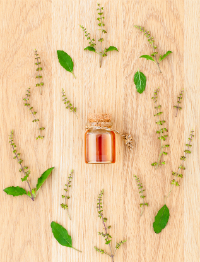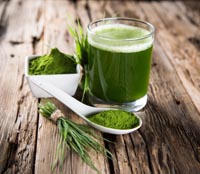Raising healthy kids sounds pretty simple: Provide good nutrition and 60 minutes of daily physical activity. Do that, and you'll reduce your child's risk for obesity, diabetes, and other chronic disease. But you're up against a host of unhealthy temptations including advertising, peer pressure, and an abundance of junk food in shiny packaging.
The first and most important step you have to take for your child's health is modeling healthy habits in front of them. Make a healthy lifestyle a family affair. Keep things simple. And don't give up when kids get picky. The tips and resources provided below will keep you on track.
Keep Kids in Motion. Once kids return to school, they are sedentary for the better part of the day. Outside of school, make sure your kids have opportunities to stretch, strengthen, and build endurance for 60 minutes daily. Make time for creative play at the park where children can engage all the major muscle groups. Provide opportunities for trying new sports or creative movement classes. Get the whole family involved with obstacle courses, biking, or hiking. When the weather outside is frightful, visit an indoor pool, playscape, climbing gym, or bounce-house facility.
Limit Screen Time. With more schools incorporating digital devices into curricula, it's important to monitor your child's free time on the screen. For younger children, set a daily limit of 30 minutes, and for older children, set a limit of 60 minutes for all media--TV, movies, and games. Consider having a "digital-free zone" in your home: one room designated just for reading, games, and music sans the headphones. Also, make one day a week (e.g., Sunday) a "device-free day" for all family members. Play games or get physically active, together.
A Balanced Diet, Not a Food Fight. No matter their age, kids can be picky eaters. Offer your child choices at meals that are acceptable to you, health promoting, and palatable. Model the healthy eating habits you want your child to have whether they are at home or out with friends. When it comes to getting kids to try new foods, get creative: Blend veggies into homemade smoothies. Serve raw veggies with hummus. Make zucchini-based brownies. Add fresh berries and dark chocolate nibs to a small serving of frozen yogurt. For the youngest kids, try renaming foods--steamed broccoli with cheese becomes "Hot-lava-covered trees." Kids' palates change as they age; what they like/don't like at age 3 is likely to be different at 13 and even 23! Introduce and reintroduce healthy selections at all meal and snack times. And don't fight about food...that only creates a lousy mood for everyone at mealtimes. Sometimes, it really is okay to skip the asparagus and still have dessert.
Tame the Sweet Tooth. Sugar intake for children is recommended to 3-4 teaspoons a day. Cutting back on soda, candy, and cookies is only the first step. Read labels to identify added sugar that can be hidden in foods including bread, condiments such as ketchup, and canned and frozen foods. Make your own frozen treats from fresh fruit, and cut down on packaged foods.
Sleep Well. During sleep, children's bodies generate hormones important to healthy growth and development. A good night of rest allows children to wake energized for the following day. Research has shown that sleep plays a role in maintaining a healthy weight and promoting a positive mood. Try to keep kids to a daily sleep-wake routine, especially during the school week.
Image Attribution: andreusK/bigstockphoto.com
References



















